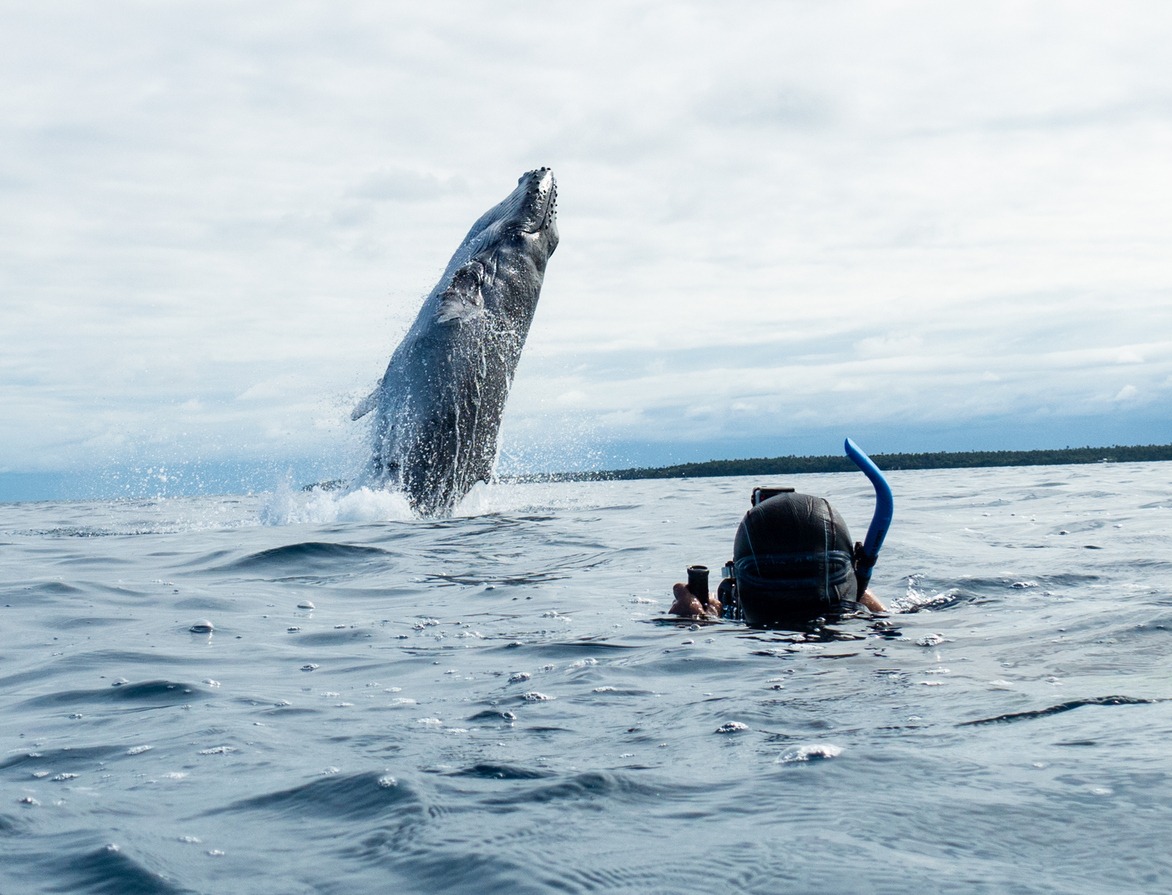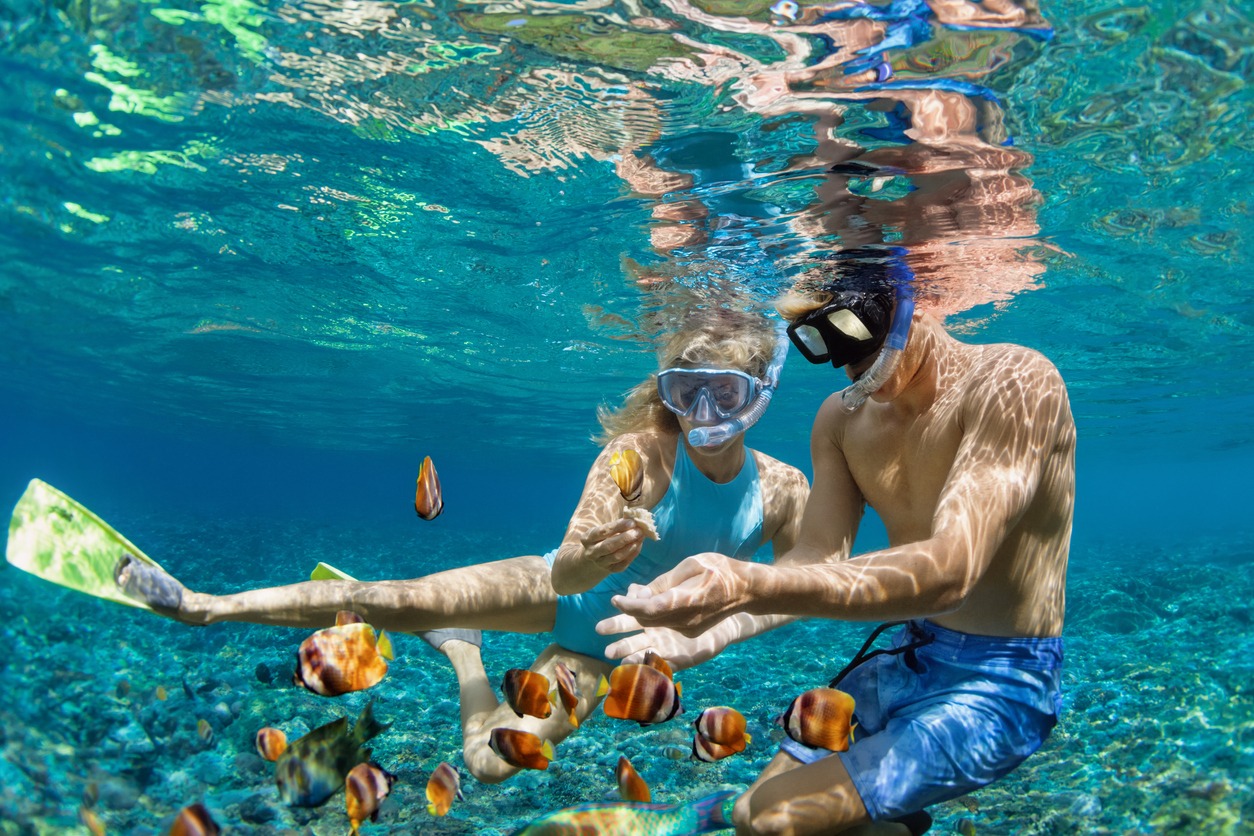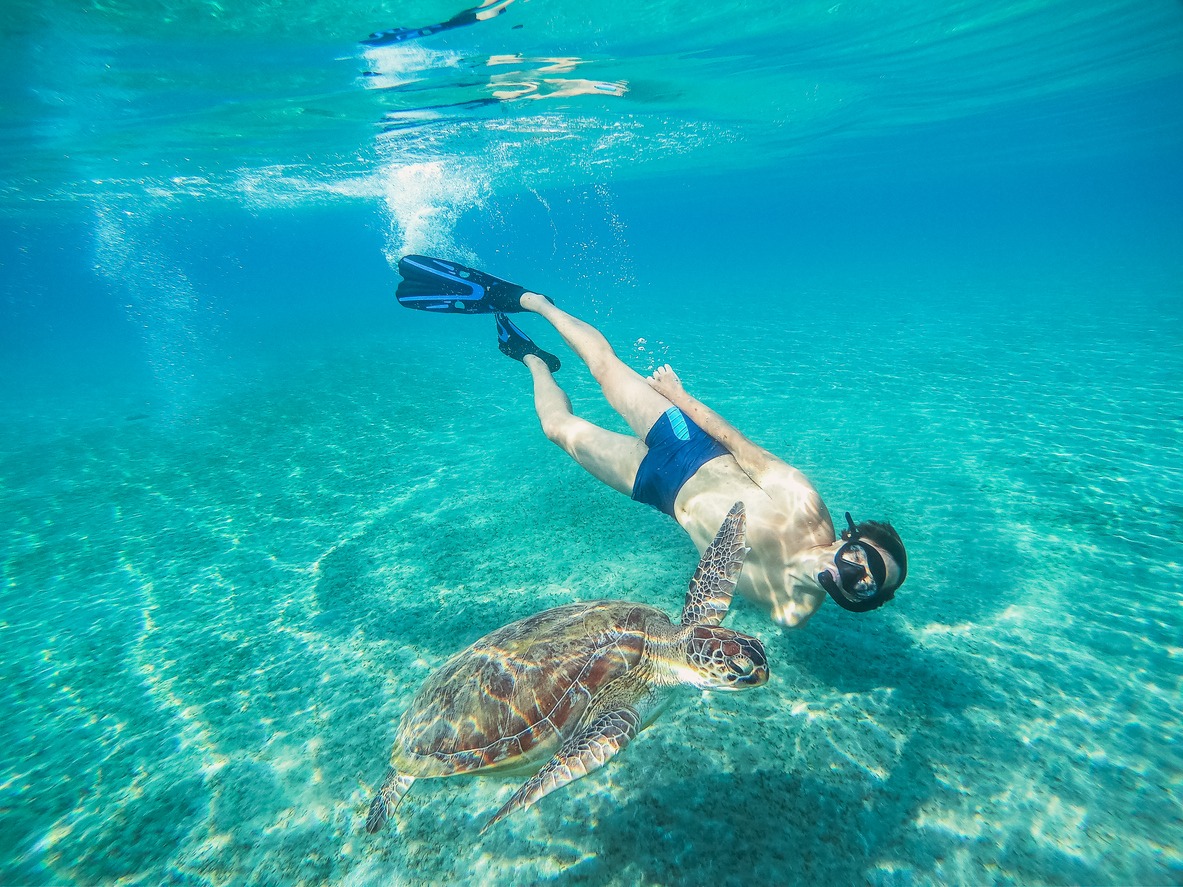Understanding the Types of Snorkels and When to Use Them
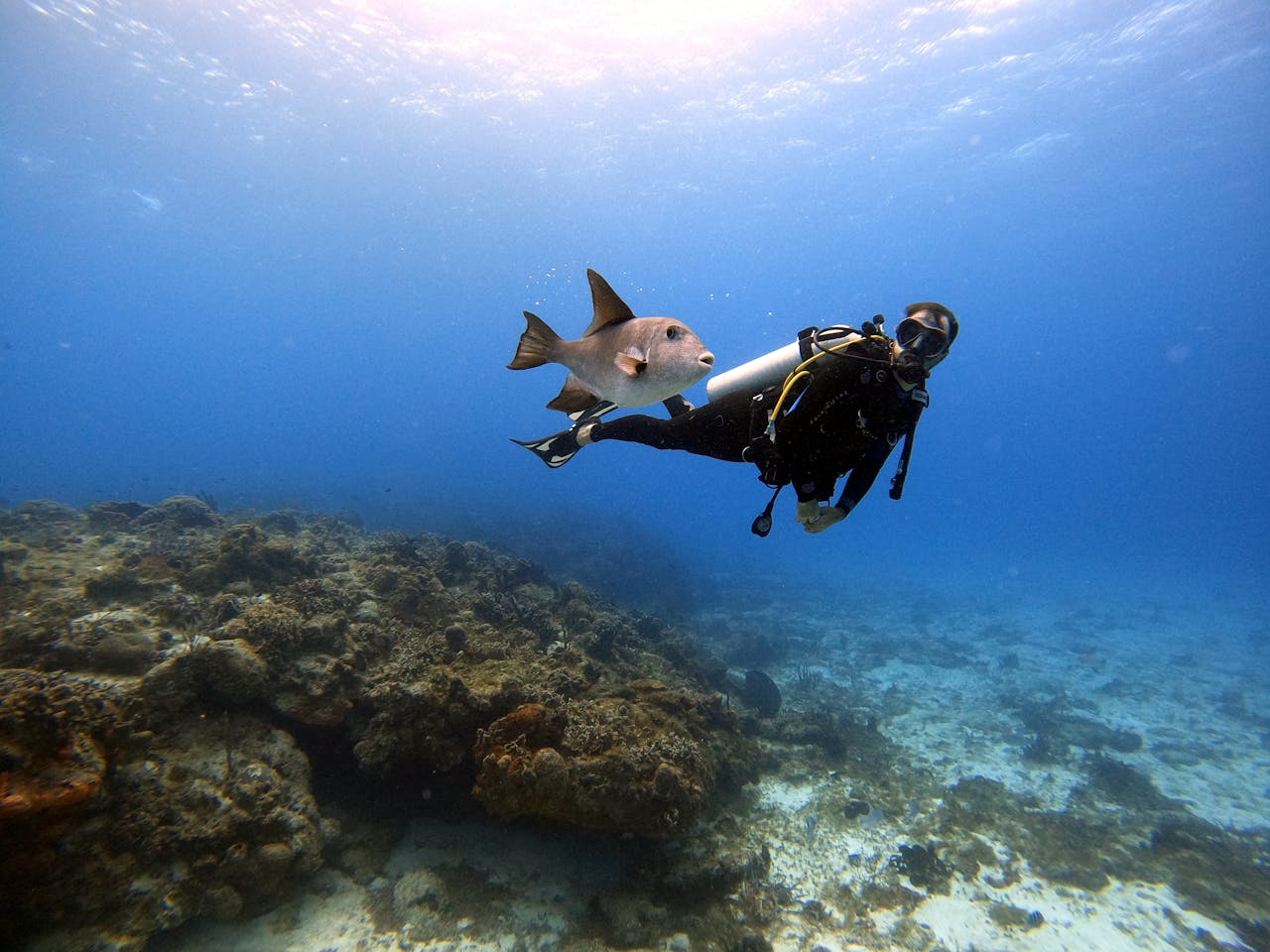
Snorkels come in various types to suit different needs and skill levels. Classic snorkels are simple and budget-friendly, ideal for beginners. Flexible snorkels offer improved comfort but may have valve issues. Semi-dry snorkels balance splash protection with easy clearing, while dry snorkels prevent water entry but can experience valve blockages. Full-face masks are easy to use but less versatile. When choosing, consider your intended use and experience level. For scuba diving, opt for models that conserve air and reduce drag. Proper care and maintenance are essential for longevity. By understanding the pros and cons of each type, you'll be better equipped to choose the perfect snorkel for your underwater explorations.
Types of Snorkels Explained
When it comes to snorkeling gear, you'll find a variety of snorkel types to choose from. Classic snorkels are the most basic and budget-friendly option, perfect for beginners. They're easy to pack but can be less comfortable due to their rigid design. If you're looking for more comfort, flexible snorkels might be your best bet. These feature a one-way purge valve to expel water and can be used for both snorkeling and scuba diving, though their tube can sometimes get blocked. Semi-dry snorkels offer a splash guard to keep water out and a purge valve for easy clearing. They're great for surface snorkeling, but be aware that the mechanical splash guards can potentially jam. For those who plan to submerge frequently, dry snorkels are ideal. They help conserve energy but may increase drag and can get blocked at the top valve. In conclusion, full-face snorkel masks are the easiest to use, allowing for normal breathing. They're suitable for beginners but can be bulkier and less comfortable than other types. Each snorkel type has its advantages and drawbacks, so consider your skill level and intended use when making your choice.
Classic Snorkel Features
The classic snorkel stands out as the quintessential choice for beginners and budget-conscious snorkelers. Its simple design features a rigid, low-profile tube that's both easy to pack and nearly indestructible. You'll find this type of snorkel to be versatile, suitable for both snorkeling and scuba diving expeditions. Standard snorkels, which are one of the three main types of snorkels, offer a classic and reliable option.
When you're considering a classic snorkel, visualize these key features:
- A straight, rigid tube extending above the water's surface
- A comfortable mouthpiece for extended use
- A basic purge valve at the bottom for water clearance
- A clip to attach the snorkel to your mask strap
While the classic snorkel's simplicity is its strength, it does lack some of the flexibility and added features found in more advanced models. You might find it less comfortable due to its rigidity, especially during longer snorkeling sessions. However, don't let this deter you. The classic snorkel's reliability and straightforward design make it an excellent tool for learning the basics of snorkeling.
If you're just starting out or looking for a no-frills option that'll withstand the test of time, the classic snorkel is your go-to choice. It provides a dependable snorkeling experience without breaking the bank.
Advanced Snorkel Designs
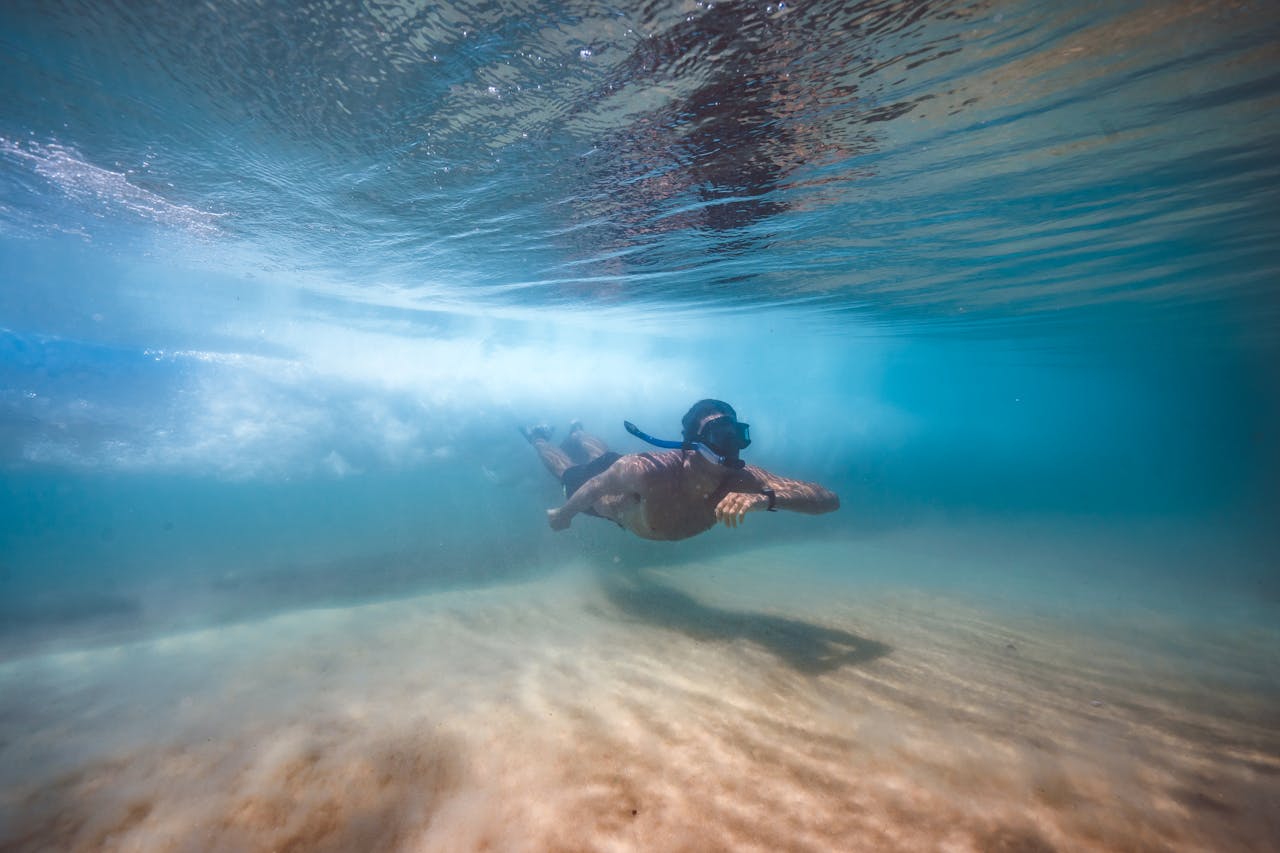
Several advanced snorkel designs have emerged to address the limitations of classic models. Flexible snorkels with purge valves offer improved comfort and easier water clearing. However, be cautious when using them in sandy environments, as the valve can malfunction if sand gets inside.
Semi-dry snorkels feature a splash guard to minimize water entry from surface splashing while allowing full submersion. They're easier to clear than classic models but may cause mouth fatigue due to increased drag.
Dry snorkels take water prevention a step further with a dry valve that completely blocks water entry. While effective, the dry top can sometimes get stuck open or closed, potentially causing issues during your swim.
Full-face snorkel masks provide a wide field of view and allow for normal breathing. They're not suitable for diving, though, and require a perfect fit to prevent leaks.
Many advanced designs incorporate streamlined tubes and ergonomic mouthpieces to maximize airflow and minimize drag. These features enhance comfort and ease of use, making your snorkeling experience more enjoyable. When choosing an advanced snorkel, consider your specific needs and the conditions you'll be swimming in to find the best option for you.
Choosing the Right Snorkel
Considering the diverse options available, choosing the right snorkel can significantly enrich your underwater experience. When selecting a snorkel, consider your skill level, comfort preferences, and intended use. Classic snorkels are budget-friendly and ideal for beginners, but their rigid design may sacrifice comfort. If you prioritize comfort, flexible snorkels allow the mouthpiece to drop away from your face, though their purge valves can sometimes get blocked.
For surface snorkeling, semi-dry snorkels offer a great balance with splash guards and purge valves for easy clearing. Dry snorkels completely prevent water entry, making them suitable for submerging, but be aware of potential valve blockages and increased drag. Full-face snorkel masks are the easiest to use, especially for beginners, but may be less comfortable and harder to pack.
When choosing your snorkel, imagine yourself:
- Gliding effortlessly through crystal-clear waters
- Observing colorful fish darting around coral reefs
- Submerging to explore underwater caves
- Floating peacefully on the surface, taking in the marine life below
Consider your specific needs and preferences to find the perfect snorkel that will enhance your underwater expeditions.
Snorkel Care and Maintenance
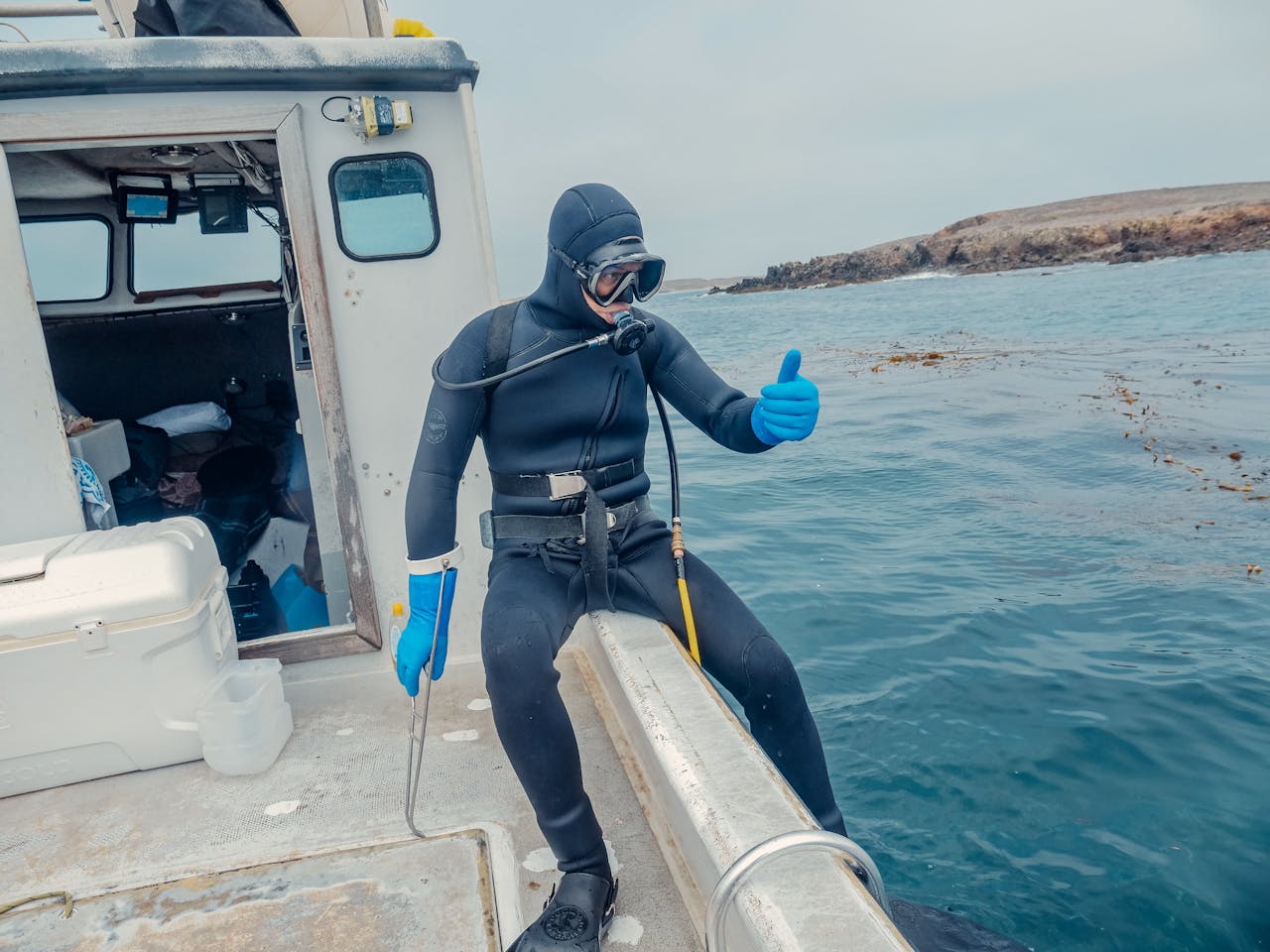
Proper care and maintenance of your snorkel can greatly extend its lifespan and guarantee peak performance. After each use, rinse your snorkel thoroughly with fresh water, paying special attention to the snorkel tube, splash guards, and any valves. This helps remove salt, sand, and other debris that can accumulate and affect functionality.
For dry snorkels or those with valves at the top or bottom, clear water properly after each plunge. Regularly inspect these valves for damage or wear, as they're imperative in keeping water out of the tube. If sand gets into the mechanism, gently brush it away to prevent jamming.
Store your snorkel in a cool, dry place away from direct sunlight, which can degrade the materials over time. When traveling, keep it separate from your snorkel mask to avoid tangling or scratching. Periodically check all connections and joints for signs of wear or loosening.
Different types of snorkels may require specific care. For example, snorkels with flexible tubes might need extra attention to prevent kinking or deformation. By following these maintenance tips, you'll secure your snorkel remains reliable for many plunges to come.
Snorkels in Scuba Diving
Scuba enthusiasts often overlook the humble snorkel's role in their underwater explorations. While you don't need a snorkel during the actual plunge, it's a helpful tool for surface swims to and from dive sites. By using a snorkel during these swims, you'll conserve your air supply for the dive itself.
Most snorkels are designed to keep water out and make breathing easier. The best snorkels for scuba diving are:
- Classic J-shaped models with a simple, reliable design
- Flexible snorkels that drop away from your face when not in use
- Snorkels with purge valves to prevent constantly clearing water
- Hydrodynamic designs that reduce drag and improve comfort
When selecting a snorkel for scuba diving, prioritize features like flexibility, purge valves, and a streamlined shape. These features will enhance your comfort and performance both on the surface and during your underwater mission. Remember, your snorkel should easily attach to your mask with a clip or snorkel keeper, making it readily available when needed.
Having a snorkel at the ready can be a lifesaver in certain situations, such as when surfacing or swimming on the surface. It acts as a guard against unexpected waves and helps maintain air trapped inside, ensuring you're prepared for any scenario during your aquatic expedition.


